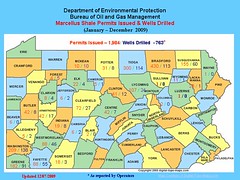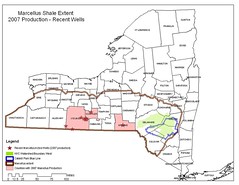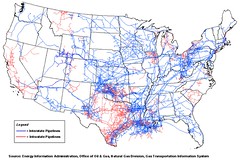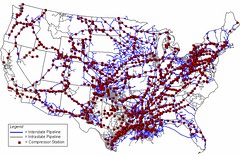Following are excerpts and links from an extensive article by Charles Duhigg, part of a series, on neglected clean water laws and lax regulator response.
• Almost four decades ago, Congress passed the Clean Water Act to force polluters to disclose the toxins they dump into waterways and to give regulators the power to fine or jail offenders. States have passed pollution statutes of their own. But in recent years, violations of the Clean Water Act have risen steadily across the nation, an extensive review of water pollution records by The New York Times found.
• In the last five years alone, chemical factories, manufacturing plants and other workplaces have violated water pollution laws more than half a million times.
• However, the vast majority of those polluters have escaped punishment. State officials have repeatedly ignored obvious illegal dumping, and the Environmental Protection Agency, which can prosecute polluters when states fail to act, has often declined to intervene.
• The Times obtained hundreds of thousands of water pollution records through Freedom of Information Act requests to every state and the E.P.A., and compiled a national database of water pollution violations that is more comprehensive than those maintained by states or the E.P.A.
(For an interactive version, which can show violations in any community, visit www.nytimes.com/toxicwaters.)
In addition, The Times interviewed more than 250 state and federal regulators, water-system managers, environmental advocates and scientists.
• That research shows that an estimated one in 10 Americans have been exposed to drinking water that contains dangerous chemicals or fails to meet a federal health benchmark in other ways.
• Because most of today’s water pollution has no scent or taste, many people who consume dangerous chemicals do not realize it, even after they become sick, researchers say.
• The Times’s research also shows that last year, 40 percent of the nation’s community water systems violated the Safe Drinking Water Act at least once, according to an analysis of E.P.A. data. ... More than 23 million people received drinking water from municipal systems that violated a health-based standard.
In some cases, people got sick right away. In other situations, pollutants like chemicals, inorganic toxins and heavy metals can accumulate in the body for years or decades before they cause problems. Some of the most frequently detected contaminants have been linked to cancer, birth defects and neurological disorders.
Records analyzed by The Times indicate that the Clean Water Act has been violated more than 506,000 times since 2004, by more than 23,000 companies and other facilities, according to reports submitted by polluters themselves.• Finally, the Times’s research shows that fewer than 3 percent of Clean Water Act violations resulted in fines or other significant punishments by state officials. And the E.P.A. has often declined to prosecute polluters or force states to strengthen their enforcement by threatening to withhold federal money or take away powers the agency has delegated to state officials.
• The E.P.A. administrator, Ms. Lisa Jackson, whose appointment was confirmed in January, said in an interview that she intended to strengthen enforcement of the Clean Water Act and pressure states to apply the law. ... "Data available to E.P.A. shows that, in many parts of the country, the level of significant noncompliance with permitting requirements is unacceptably high and the level of enforcement activity is unacceptably low.”
(To find out about every state’s enforcement record and read comments from regulators, visit www.nytimes.com/waterdata.)
[In West Virginia, where health problems seem undeniably linked to contaminated water, industy predictably states that it is not responsible for the difficult to prove source of toxins in drinking water. However, according to Ben Stout, a biology professor at Wheeling Jesuit University who tested the waters, “The chemicals coming out of people’s taps are identical to the chemicals the coal companies are pumping into the ground.”]*
• The memos are marked “DO NOT DISTRIBUTE.”
They were written this year by E.P.A. staff, the culmination of a five-year investigation of states’ enforcement of federal pollution laws. And in bland, bureaucratic terms, they describe a regulatory system — at the E.P.A. and among state agencies — that in many ways simply does not work. For years, according to one memo, federal regulators knew that more than 30 states had major problems documenting which companies were violating pollution laws. Another notes that states’ “personnel lack direction, ability or training” to levy fines large enough to deter polluters.
• [Not surpringly!]* Enforcement lapses were particularly bad under the administration of President George W. Bush, employees say. “For the last eight years, my hands have been tied,” said one E.P.A. official who requested anonymity for fear of retribution. “We were told to take our clean water and clean air cases, put them in a box, and lock it shut. Everyone knew polluters were getting away with murder. But these polluters are some of the biggest campaign contributors in town, so no one really cared if they were dumping poisons into streams.”
• Some say changes will not occur without public outrage.
“When we started regulating water pollution in the 1970s, there was a huge public outcry because you could see raw sewage flowing into the rivers,” said William D. Ruckelshaus, who served as the first head of the Environmental Protection Agency under President Richard M. Nixon, and then again under President Ronald Reagan.
“Today the violations are much more subtle — pesticides and chemicals you can’t see or smell that are even more dangerous,” he added. “And so a lot of the public pressure on regulatory agencies has ebbed away.”
* Splashdown editorializing.
AREA VIOLATIONS
Facility: Towanda Mun Auth WWTP, Towanda, PA
Last Inspected: Sept. 5, 2007
Violations: 11 FINES: $0
Facility: Global Tungsten & Powders Corp., Towanda, PA
Last Inspected: July 24, 2007
Violations: 27 FINES: $0
Facility: Cargill Meat Solutions Corp., Wyalusing, PA
Last Inspected: Oct. 17, 2007
Violations: 13 FINES: $0
DEMAND ACCOUNTABILITY!



















It is truly amazing that there is anyone left in this country that actually believes we are protecting our environment and the public health through the EPA and regulations "on the books." I have family members who aren't worried about gas drilling because "our public officials will not let anything bad happen." People are so trusting. What is the matter with people?
ReplyDelete